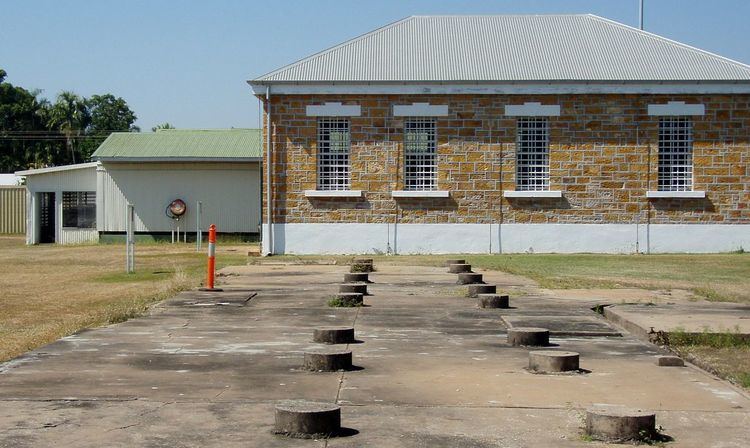Status Closed Opened 1883 | Capacity ? Phone +61 8 8941 2260 | |
 | ||
Location Darwin, Northern Territory Security class Minimum and Maximum Security Managed by Northern Territory Department of Community Development, Sport & Cultural Affairs Hours Closed now Thursday9AM–5PMFriday9AM–5PMSaturday10AM–5PMSunday10AM–5PMMonday9AM–5PMTuesday9AM–5PMWednesday9AM–5PM Similar Parliament House - Darwin, Leanyer Recreation Park, George Brown Darwin B, Aquascene, Darwin Military Museum | ||
Fannie bay gaol ghosts of the past
Fannie Bay Gaol is a historic gaol in Darwin, Australia. The gaol operated as Her Majesty's Gaol and Labour Prison, from 20 September 1883 until 1 September 1979.
Contents
- Fannie bay gaol ghosts of the past
- Fannie bay gaol darwin nt australia northern territory
- Notable prisoners
- References
In 1888, Deputy Sheriff (and later Government Resident) John George Knight collected sketches and drawings made by Aboriginal prisoners to be displayed at the Melbourne Centennial Exhibition under the title, The Dawn of Art. Dr Philip Jones, Senior Curator, Department of Anthropology, South Australian Museum, has called this the first exhibition of Aboriginal art.
The last executions in Darwin were held at Fannie Bay Gaol in 1952, when Jerry Coci and Jonus Novotny, Czechoslovakian immigrants, were hanged for the murder of a taxi driver.
The gallows were constructed especially for this execution, in the infirmary. A pit was dug into the floor at one end of the building, with brick walls either side to support the beam. A small trapdoor and flight of steps led down into the pit for the doctor to examine the bodies after the drop. The prisoners were held in wire cages at the other end of the infirmary prior to execution.
The gallows remain on public view, and visitors can push the lever that operated the trap. The prison was damaged, along with much of Darwin, by Cyclone Tracy in 1974.
At first female prisoners were housed in the Gaoler's accommodation but in 1928 a female section was constructed and male and female prisoners were held in separate buildings. The female prison block included a small garden designed to keep the prisoners busy. There was also a block for children, which in the early 1970s was also used for refugees who had arrived by boat.
Two cells were placed in the middle of the lawn for violent or mentally ill inmates. These cells included a small yard encased with cyclone fencing. Maximum security cells included hooks mounted into the walls for the restraint of inmates and very narrow doorways to prevent inmates escaping when a guard entered.
The gaol is now a museum open to the public.
